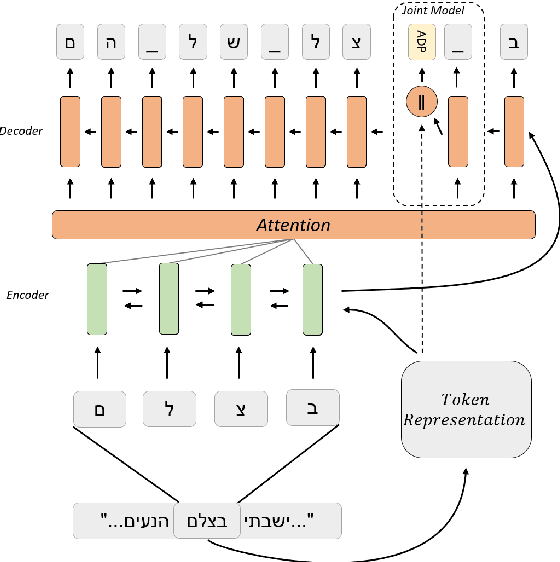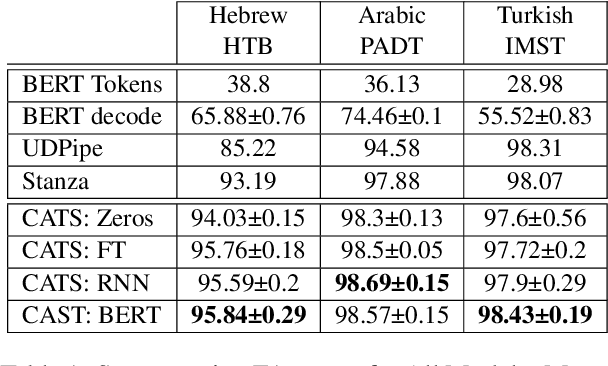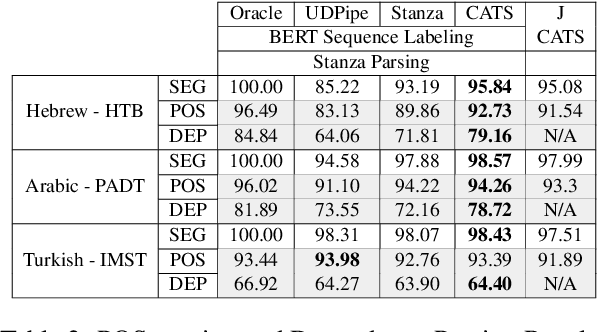Neural Token Segmentation for High Token-Internal Complexity
Paper and Code
Mar 21, 2022



Tokenizing raw texts into word units is an essential pre-processing step for critical tasks in the NLP pipeline such as tagging, parsing, named entity recognition, and more. For most languages, this tokenization step straightforward. However, for languages with high token-internal complexity, further token-to-word segmentation is required. Previous canonical segmentation studies were based on character-level frameworks, with no contextualised representation involved. Contextualized vectors a la BERT show remarkable results in many applications, but were not shown to improve performance on linguistic segmentation per se. Here we propose a novel neural segmentation model which combines the best of both worlds, contextualised token representation and char-level decoding, which is particularly effective for languages with high token-internal complexity and extreme morphological ambiguity. Our model shows substantial improvements in segmentation accuracy on Hebrew and Arabic compared to the state-of-the-art, and leads to further improvements on downstream tasks such as Part-of-Speech Tagging, Dependency Parsing and Named-Entity Recognition, over existing pipelines. When comparing our segmentation-first pipeline with joint segmentation and labeling in the same settings, we show that, contrary to pre-neural studies, the pipeline performance is superior.
 Add to Chrome
Add to Chrome Add to Firefox
Add to Firefox Add to Edge
Add to Edge